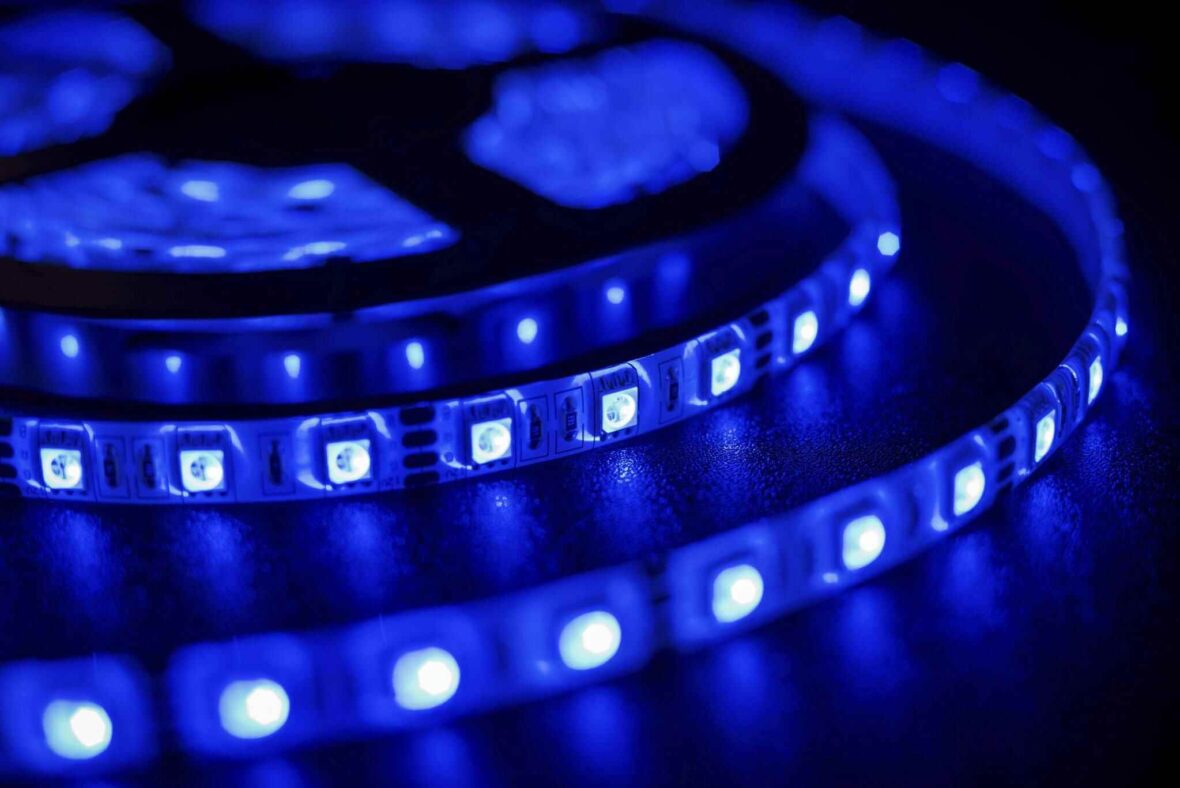LED strip lights are becoming increasingly popular for home and commercial lighting. Not only are they more efficient and longer-lasting than traditional incandescent lights, but they also offer a wide range of color options and can be easily controlled and programmed.
In this article, we will discuss everything you need to know about LED strip lights, including what they are, how they work, and what to consider when purchasing them.
Contents
What Are LED Strip Lights?
LED strip lights are thin circuit boards with a series of mounted LEDs, usually covered by an adhesive backing. They are flexible and can be cut to fit specific lengths or shapes. LED strip lights can be used for a wide range of lighting applications, including backlighting, accent lighting, task lighting, and even for creating unique decorative lighting designs.
How Do LED Strip Lights Work?
LED strip lights work by using a series of LEDs that emit light when an electric current is passed through them. These LEDs are mounted onto a flexible circuit board, which can be cut to the desired length. The circuit board also includes additional components such as resistors, capacitors, and transistors, which help regulate the flow of electricity and protect the LEDs from damage.
To power LED strip lights, you will need a driver or transformer that converts the AC power from your home or office into DC power that is compatible with the LED strip lights. Some LED strip lights come with their own power supply, while others require an external power supply.
LED strip lights come in different varieties, and it is essential to choose the right one for your particular needs. Here are some crucial factors that you should consider before purchasing LED strip lights.
What To Consider When Purchasing LED Strip Lights
When purchasing LED strip lights, there are several factors that you should consider. These include:
1. Brightness
Brightness is an essential factor to consider when buying LED strip lights. LED strip lights are available in different brightness levels, measured in lumens per foot (LPF). The brightness level you select will depend on the intended use of the lights.
If you plan to use the lights for task lighting, a higher brightness level is recommended. However, if you plan to use the lights for mood lighting, a lower brightness level will suffice.
2. Color Temperature
Color temperature is another essential factor to consider when purchasing LED strip lights. It is measured in Kelvin (K) and refers to the color of the light produced by the LEDs. LED strip lights are available in a range of color temperatures, including warm white, cool white, and daylight.
Warm white has a yellowish glow, while cool white has a bluish-white glow. Daylight color temperature is considered neutral and falls between warm white and cool white.
3. Color Rendering Index
The Color Rendering Index (CRI) is a measure of how accurately the light produced by the LEDs represents the colors of objects. The CRI scale ranges from 0 to 100, with a higher CRI indicating better color accuracy. When selecting LED strip lights, it is essential to consider the CRI, especially if you plan to use the lights for tasks that require accurate color representation.
4. IP rating
The IP rating of LED strip lights refers to their level of protection against dust and water. The IP rating consists of two digits, with the first digit indicating the level of protection against dust and the second digit indicating the level of protection against water. When selecting LED strip lights, it is essential to consider the IP rating, especially if you plan to use the lights in outdoor or wet areas.
5. Length And Cutting
The length and cutting of LED strip lights are also essential factors to consider. LED strip lights are available in different lengths, and you can cut them to the desired length using a pair of scissors or a sharp knife. When selecting LED strip lights, it is essential to measure the length of the area where you plan to install the lights and purchase a strip that matches that length. Additionally, it is important to consider the cutting intervals of the LED strip lights, which vary by manufacturer.
6. Type Of Power Supply
When purchasing LED strip lights, it is essential to consider the type of power supply needed to power the lights. Some LED strip lights require a low-voltage DC power supply, while others require a high-voltage AC power supply. It is important to ensure that the power supply you choose matches the requirements of the LED strip lights you intend to purchase.
Conclusion
In conclusion, LED strip lights are an excellent option for home and commercial lighting applications. When purchasing LED strip lights, it is important to consider factors such as brightness, color temperature, CRI, IP rating, length, cutting, and power supply.
By considering these factors, you can select the right LED strip lights for your needs and create a beautiful and energy-efficient lighting scheme.





